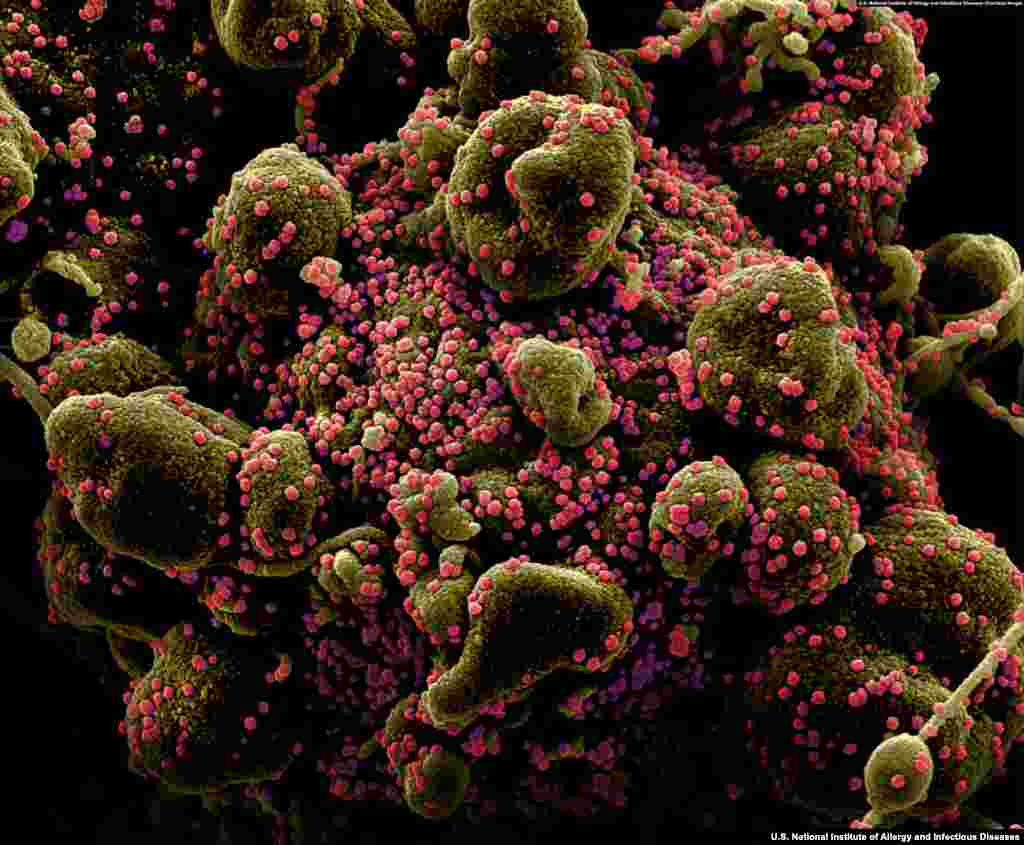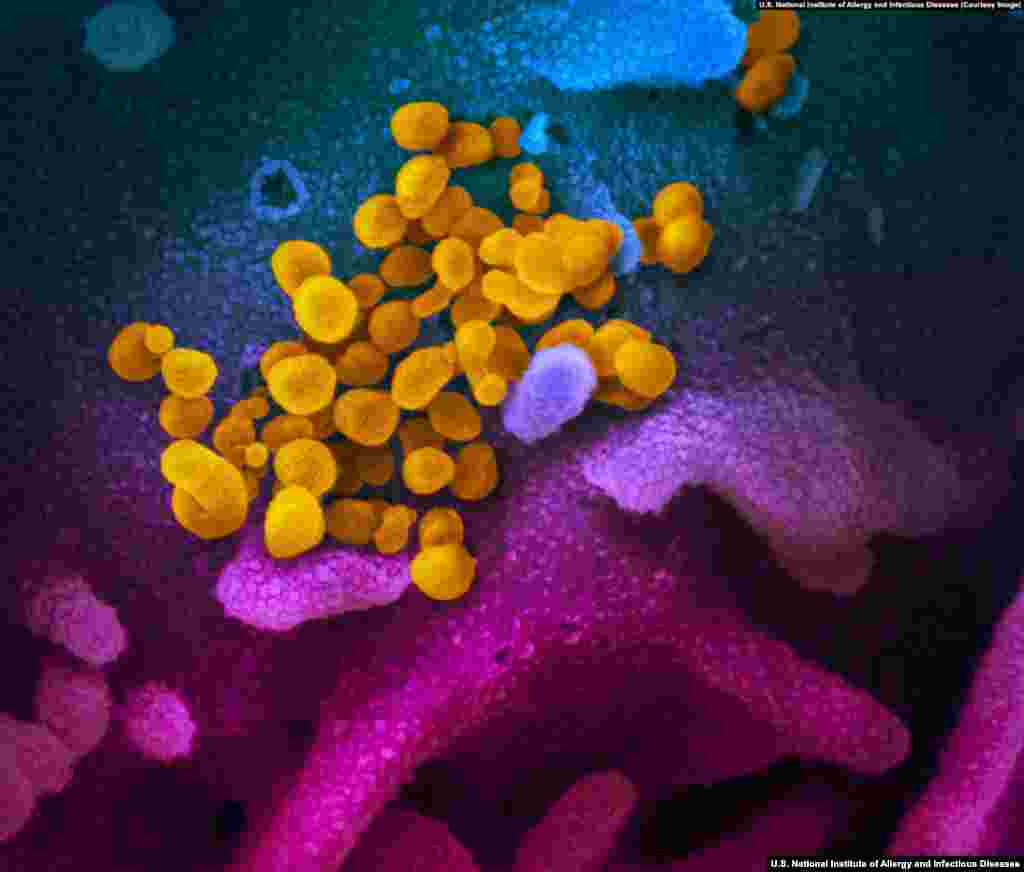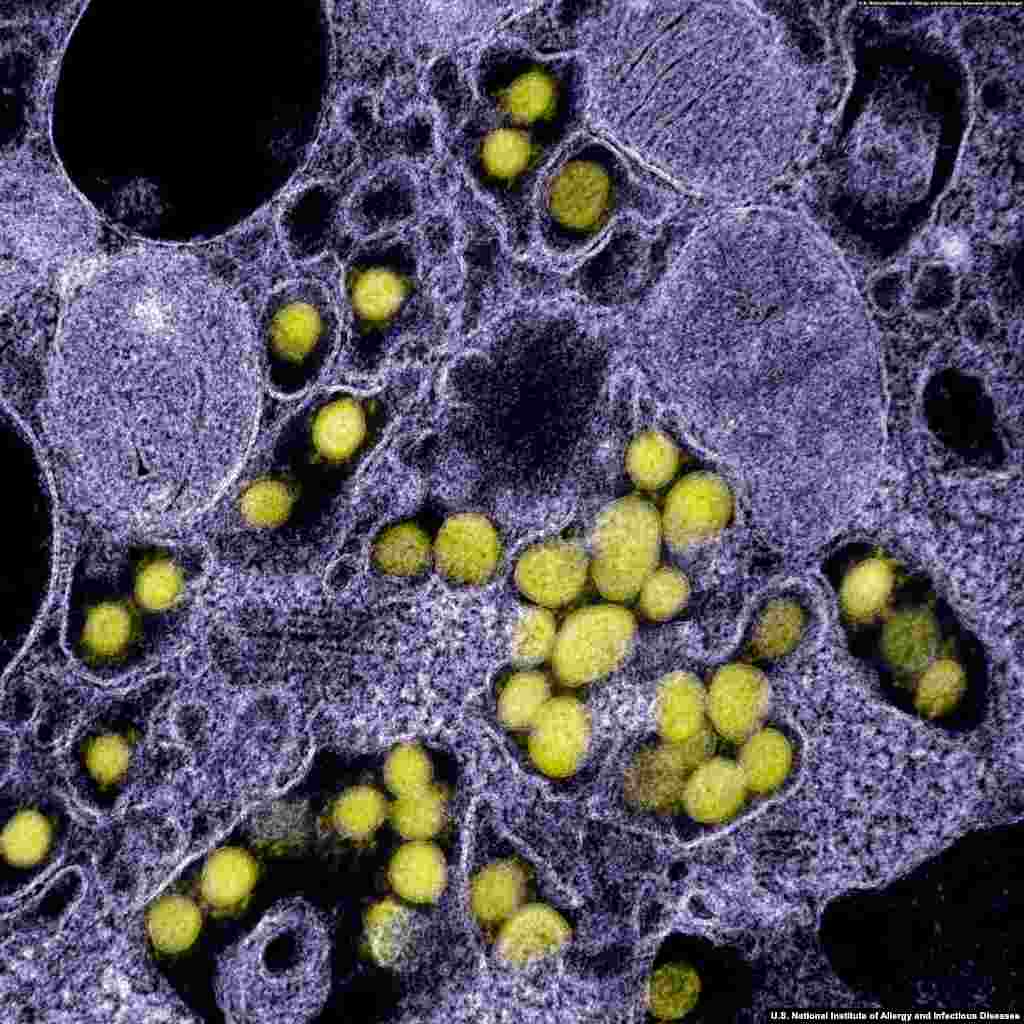A look at what's going on with the pandemic-causing coronavirus at the microscopic level.
Up Close with The Enemy: The Coronavirus in Stunning Detail

9
Detail of a human cell heavily infected by SARS-CoV-2. Once expelled from a patient's body, the virus is believed to survive for up to several days on some surfaces. (Courtesy: U.S. National Institute of Allergy and Infectious Diseases)

10
SARS-CoV-2 virions emerge from a human cell after replicating. Despite their apparent longevity, the virions can be destroyed with warm, soapy water. (Courtesy: U.S. National Institute of Allergy and Infectious Diseases)

11
SARS-CoV-2 virions in a human cell. Medical experts advise regular handwashing and not touching one's face are the most important things to reduce the risk of contracting the virus. (Courtesy: U.S. National Institute of Allergy and Infectious Diseases)



